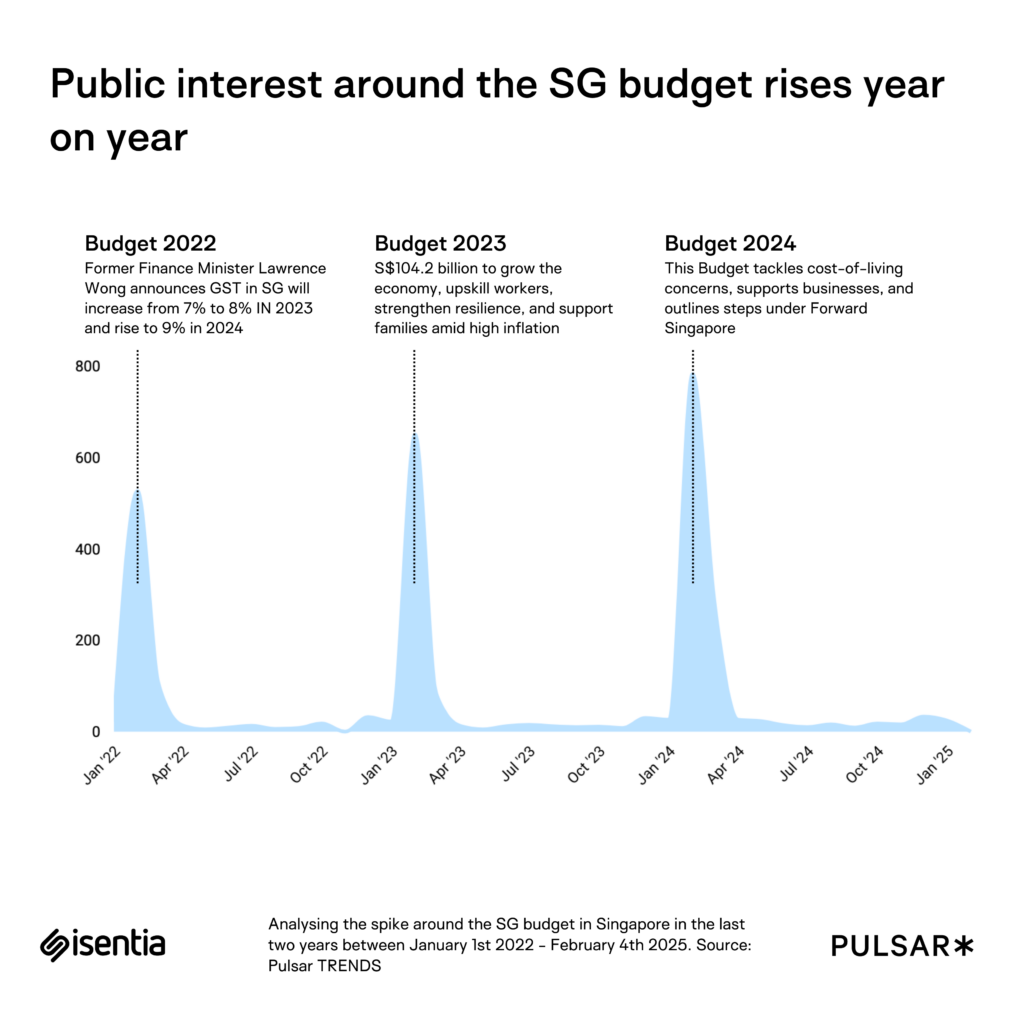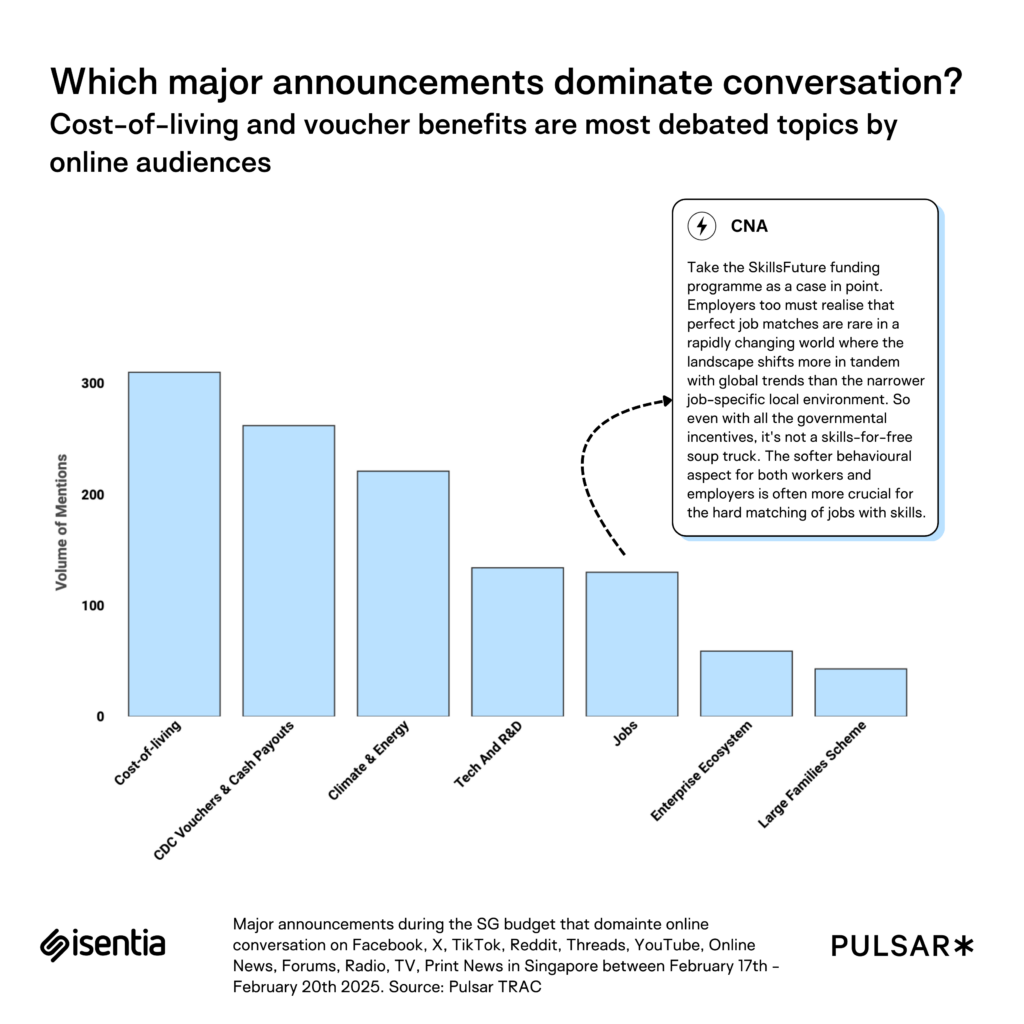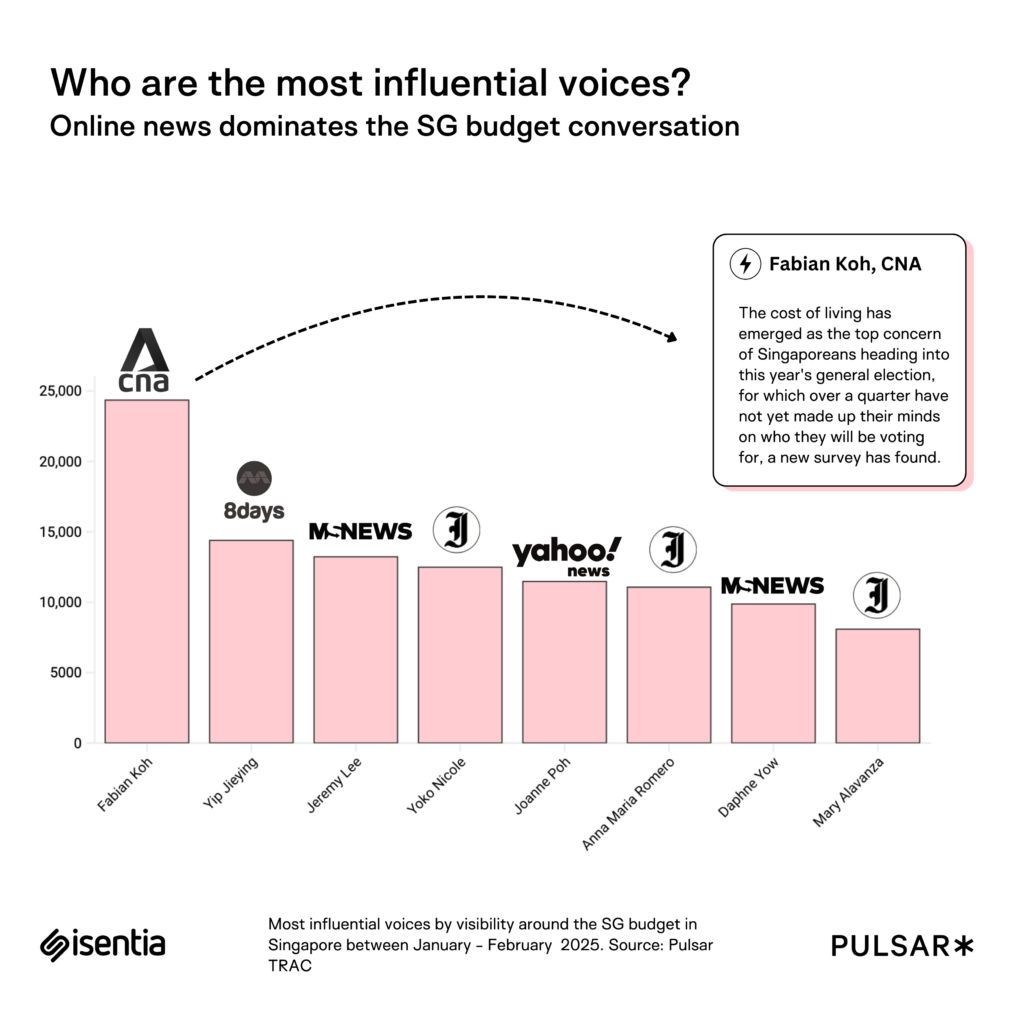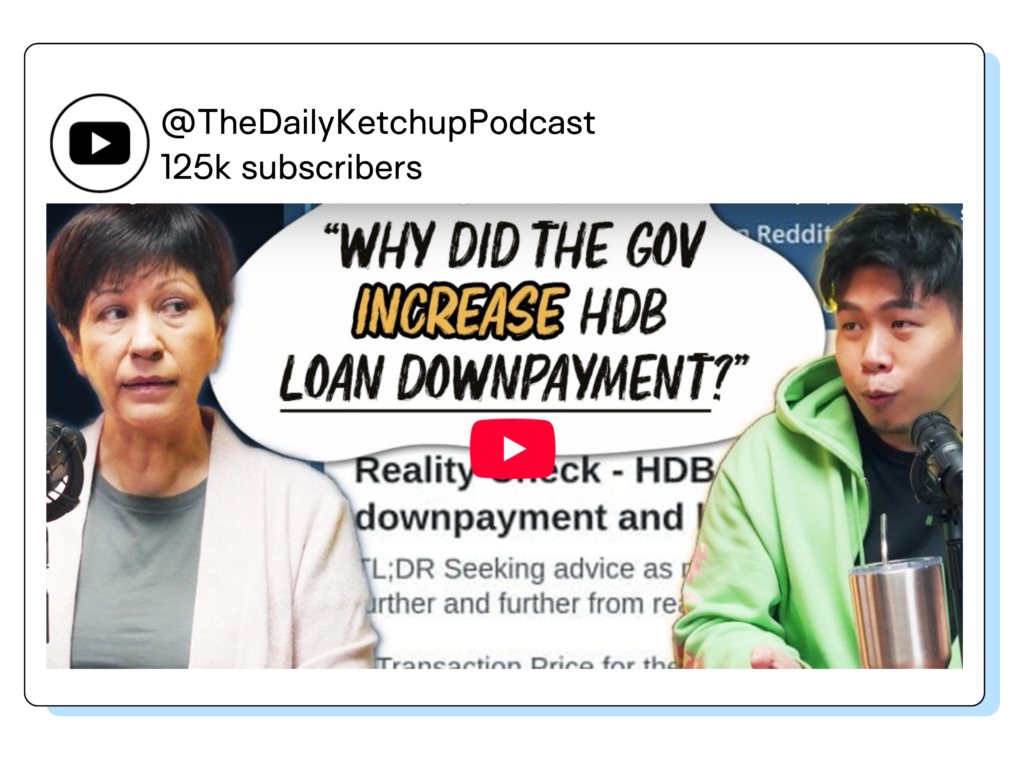Blog
The fundamentals of stakeholder strategy
A practical guide to tailored stakeholder management, offering strategies and tools to identify, map, and nurture relationships.
The Singapore budget is here and audiences are mindful of the new announcements more than ever. Cost-of-living directly affecting housing, managing enterprise businesses and easy cash benefits are what audiences are paying close attention to.
In anticipation of the budget, we analysed 30k mentions of audience conversation on Facebook, TikTok, Online News, YouTube, TV, Forums, X, Radio, Print News, Threads and Reddit in Singapore between January 1st 2025 – February 20th 2025. What’s fascinating to see is that the interest in the budget, especially by young Singaporeans, rises every year. We’re also quick to analyse how the conversation pans out this year.

Last year’s budget generated the highest level of public conversation compared to previous years, reflecting growing interest and concern over economic policies. Each year, discussions spike around budget announcements with focus on cost-of-living relief, business support, and long-term economic planning under Forward Singapore.
GST hikes from 7% to 9% in the past two years from 2022 to 2024 and economic support measures in the budget of 2023, have led to increased conversation.


Cost of living and voucher benefits make up the majority of the debate online. The budget was introduced as the “budget for the future”, but some viewed the announcements as damage control measures. Young Singaporeans are worried about future prices for public housing and question why private housing prices are sky-high. Some are concerned about the quality of jobs like contract work, gig economy jobs, or even unstable employment.
On a brighter side, audiences on Facebook and Reddit, where the majority of the conversation is happening, also logically break down these relief measures by realising that jobs in Singapore depend on global trends and that the government cannot mass-create jobs for everyone. The more important factor to consider is how jobs are matched on a technical and soft-skills basis. SkillsFuture benefits are a way of up-skilling and are an add-on that might not guarantee everyone a job-talent match necessarily, but draw them closer to getting employed in a field of their choice.

PM Wong introduced a slew of voucher credits under the ActiveSG, LifeSG, Climate Voucher schemes, alongside Medisave top-ups, utility rebates, and personal income tax rebates.
However, Singaporeans are being more judicious with their finances, and are doubtful how immediate cash payouts and Community Development Council (CDC) vouchers work for them on a long-term basis. On the contrary, some expected more cash payouts that provide instant relief to deal with rising costs, as opposed to vouchers that are accessible only to a few merchants and limited to specific uses.

Online and alternative news media have prompted how these narratives take shape. What’s interesting to note is that alternative news media is more in quantity compared to mainstream media that usually wins because of a higher volume of mentions and credibility.
Journalists from alternative media sources like the Independent Singapore stress on individual Singaporean concerns, rather than larger issues. The focus is on how young mid-level workers in Singapore feel financially concerned about managing income with rising costs that could directly affect their family members.
Many of these news sources also have Facebook pages where audience discussions thrive. Many praised the budget for providing relief to low and middle income families and appreciate the SG60 voucher scheme promised to all citizens. They do, however, question how these can be converted to cash, giving us an indication of the majority of audiences wanting some sort of instant financial gratification.

Social media sites rise to the top when it comes to the volume of how content travels across online sources. X, The Straits Times and Facebook see the highest volume in terms of engagements by audiences. On X, for example, the SG budget, bilateral ties with other ASEAN nations and the infrastructure projects are in focus.
For the Singapore budget specifically, upgrading of older HDB flats and ties with Malaysia through SEZ projects make up the majority of the conversation online.
One very important medium to point out are podcasts that have easily become a favourite with young Singaporeans. They’re okay at watching long form content that informs them about budget benefits.

For example, the Daily Ketchup, a quirky news commentary podcast on the happenings in Singapore, touches upon topics around how married homebuyers with children get top priority for HDB BTO (Build-to-order) flats under recent policy updates. They discuss how raising a baby in Singapore is not cheap, but with the Large Families Scheme introduced in the latest budget, young couples have more benefits to support them in growing a family.
Every year the budget becomes a hot topic for a conversation starter and welcomes a mixed bag of responses. What’s important to learn from this year’s budget is that it might not solve all issues at hand, and cannot attempt to perfectly answer the “what’s in it for me?” question. It’s more a way of future proofing and becoming self-reliant, following the Forward Singapore guidelines. Only time will tell how these measures can get truly institutionalised and understood by audiences, giving us a sense of what we can expect for the upcoming General Election this year.
Interested in learning more? Email us at info@isentia.com
A practical guide to tailored stakeholder management, offering strategies and tools to identify, map, and nurture relationships.
Across the communications landscape, teams are being asked to do more with less, while staying aligned, responsive and compliant in the face of complex and often shifting stakeholder demands. In that environment, how we track, report and manage our relationships really matters. In too many organisations, relationship management is still built around tools designed for […]
Get in touch or request a demo.